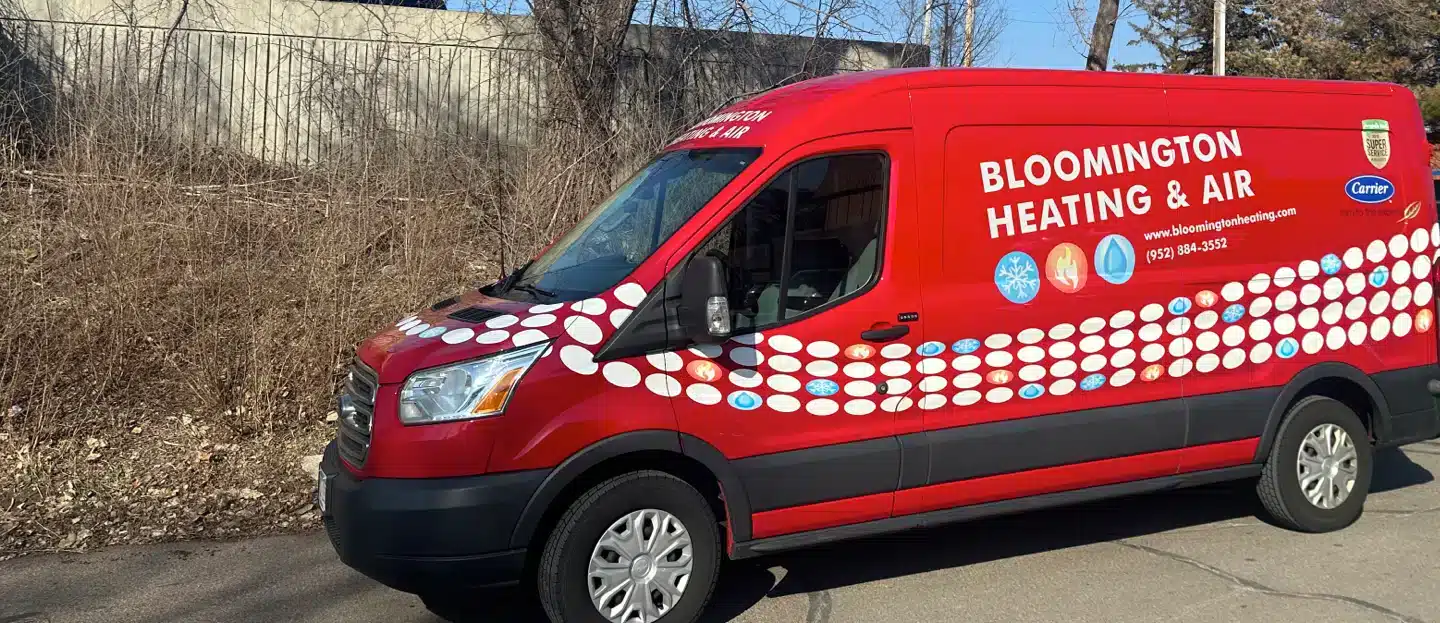
24/7 Emergency Phone Line
Family Owned & Operated
Licensed, Bonded & Insured
Routine HVAC maintenance can go a long way in ensuring your home stays warm during the winter months. Heating systems comprised of older furnaces, however, typically require more care than newer models with newer equipment. As with most electrical appliances, heating devices become more susceptible to wear and failure over time because of problems like dust buildup, electrical shortages, or a combination of these, among other factors. Determining the exact cause or causes of heating failure in an older furnace is not easy without professional heating services. Nevertheless, it is important that homeowners know what to look for regarding issues that commonly affect older furnaces. If your furnace is at the tail-end of its functional lifespan and if your heater functions improperly, consider the following tips, courtesy of Minnesota heating and air conditioning experts at Bloomington Heating & Air.
1. Accumulated Dirt & Dust
When little-to-no air filters through the vents, it is worth checking the heating system for buildup comprised of dirt, dust, and other debris. As with AC systems, blower motors within heating systems can become clogged and jammed due to accumulated dust. Dirt build-up can also coat the heater’s flame sensor and air filters which could shut off the gas valve and reduce efficiency. Old furnaces that have not been maintained or repaired in a while are highly likely to collect dust. To ensure heating equipment remains clean, clear any vents from obstructions, replace air filters at least once a month, and schedule routine HVAC maintenance.
2. Pilot Lights
Furnace models that are a few decades old typically ignite via small gas burners called pilot lights, which are kept on whenever the heater is working. In contrast, newer models ignite with an electronic spark or hot surface ignition, which does not have to remain on to function. As such, newer furnaces are able to conserve more gas and electricity than older models. Additionally, a strong enough draft could blow out the pilot light and shut down the heating system. In this case, relighting the pilot light could return the heater back to working condition. Purchasing a more draft-resistant heater replacement, however, may be more beneficial.
3. Malfunctioning Components
The wiring and electrical components in older furnaces are not as resistant to electric shortages and fluctuations as with newer models. To the misfortune of homeowners, determining which part of the system needs replacement is a difficult task best left to HVAC professionals. Left unattended, however, a single malfunctioning part could result in multiple other components to fail, which, in turn, could result in higher repair costs. For the most cost-effective solutions, schedule heating repairs with Bloomington Heating & Air sooner rather than later.
4. Decreased Efficiency
All heating systems naturally become less efficient over time, but newer furnace models use technology that makes them more durable than older models. With older furnaces, an emergency heating repair can get the equipment back into working condition momentarily. On the other hand, it may be time for an upgrade — whether it’s a few parts or the whole system. Deciding between upgrading an old furnace altogether or scheduling for another heating repair should ultimately be determined based on your budget and a professional HVAC inspection.
